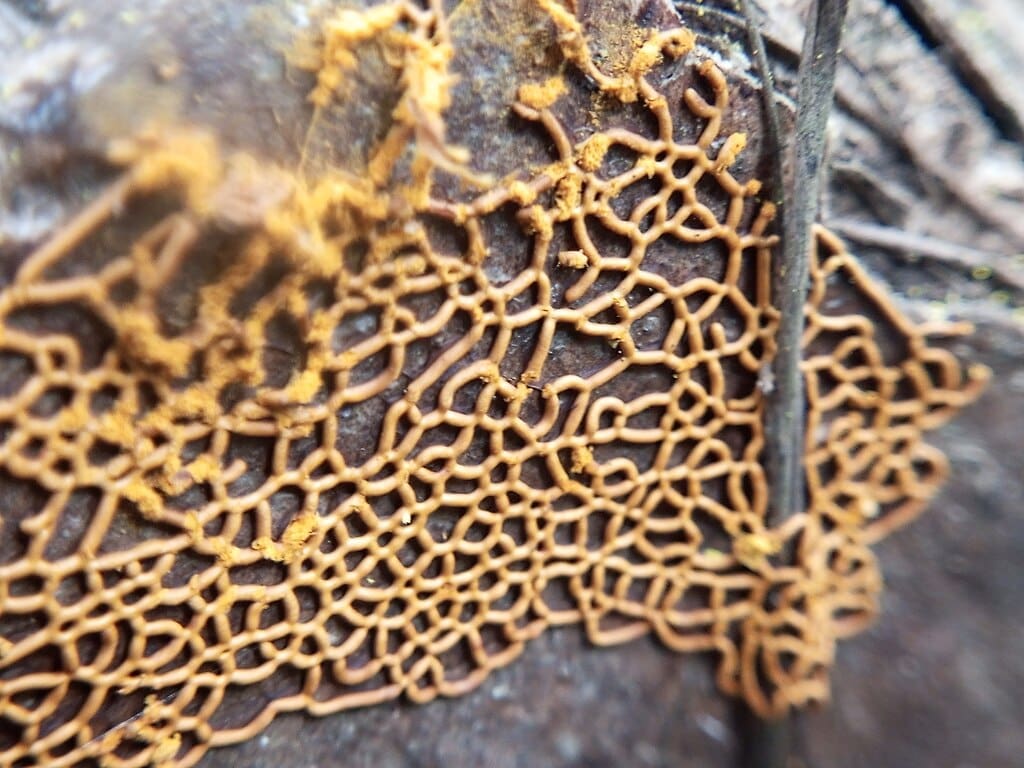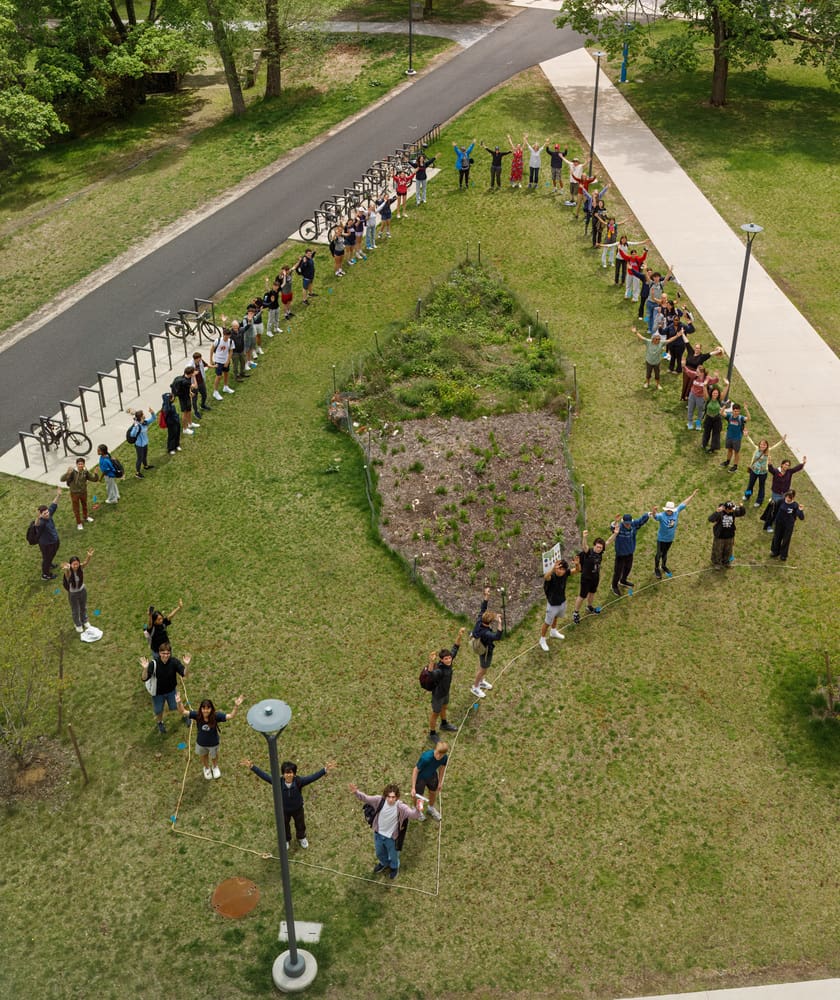What brainless creature can learn, problem solve, and even hold down a job?
The slime mold!

Slime molds are eukaryotic organisms (a type of organism with membrane bound organelles, like nuclei) that can live either as single-celled individuals or clumped together in large aggregates, called plasmodial slime molds. These strange creatures have long fascinated humans, and it’s no surprise why.
The individuals of the species Physarum polycephalum live as solitary cells for a period of time and then come together as plasmodial slime molds, before splitting again to reproduce. Because of this strange cellular structure across their life cycle, they have been a challenge to classify, and were previously grouped as fungi. There are over 900 different species of slime molds, which come in different shapes, sizes, and colors.
Since they are single-celled organisms, slime molds do not form nervous systems or organs like a brain. However, when they live as plasmodial slime molds, the many nuclei form a network within a single cell membrane that can process sensory information independently and share that information with each other. In this way, they have been shown to learn where displeasing or toxic substances are within an area and then avoid that area in the future, remembering such stimuli and passing it on. They can play the world’s most successful game of “telephone”!

How have slime molds become known for problem solving?
Because of their ability to group together and send out strands of slime, slime molds are adept problem solvers. They can sense the chemical traces of food sources in the air the way that we sniff out food with our senses of smell, and pulse out toward that signal.
Researchers have set up experiments where they placed oat flakes, a food greatly enjoyed by slime mold, at different points in a dish, and observed the slime mold find the shortest route between them. Slime molds can map out the most efficient network of pathways between dozens of different points of interest, organically figuring out the solution to a problem of tremendous computational complexity. In different experiments, they have mimicked the Tokyo train network, as well as British and Iberian road networks.
Take a look at their movement and decision making:
What else can slime molds do?
Scientists fascinated by slime molds’ power have wondered about the possibility of “computing” with slime molds. A graduate student in the UK has powered a microchip with a slime mold sample, and other British researchers have created a robot that is controlled by a slime mold at its center reacting to light, which it likes to avoid.
Perhaps strangest still is the decision by Hampshire College to give slime mold a faculty appointment. A sample of Physarum Polycephalum is the school’s resident non-human scholar, and it does research on problems posed to it by students modeling various policy questions.
Though their intelligence is quite different from our own, it is certainly worthy of respect, and can teach us a thing or two. For more interesting looks at slime mold, check out the work of Heather Barnett, who spoke at our Voices of Nature conference in 2018, and recorded a popular TED Talk on the subject. As research on this intriguing creature reminds us, intelligence comes in many life forms.
Off to learn some more,
Maya

Maya Dutta is an environmental advocate and ecosystem restorer working to spread understanding on the key role of biodiversity in shaping the climate and the water, carbon, nutrient and energy cycles we rely on. She is passionate about climate change adaptation and mitigation and the ways that community-led ecosystem restoration can fight global climate change while improving the livelihood and equity of human communities. Having grown up in New York City and lived in cities all her life, Maya is interested in creating more natural infrastructure, biodiversity, and access to nature and ecological connection in urban areas.
Sources and Further Reading:
https://www.pbs.org/wgbh/nova/article/slime-mold-smart-brainless-cognition/
https://www.vox.com/science-and-health/2018/3/6/17072380/slime-mold-intelligence-hampshire-college
https://en.wikipedia.org/wiki/Physarum_polycephalum
https://www.newscientist.com/article/dn11875-bio-sensor-puts-slime-mould-at-its-heart/
https://www.newscientist.com/article/dn8718-robot-moved-by-a-slime-moulds-fears/



